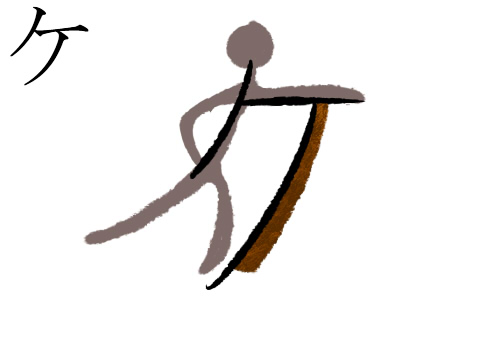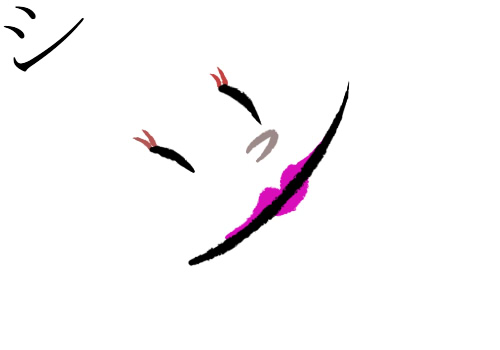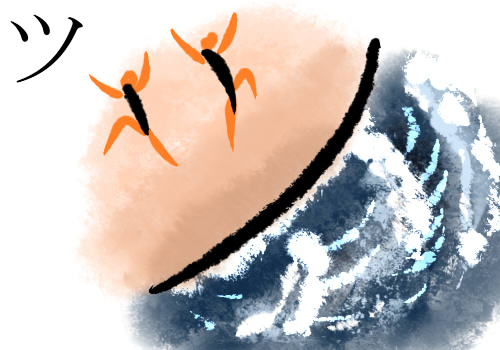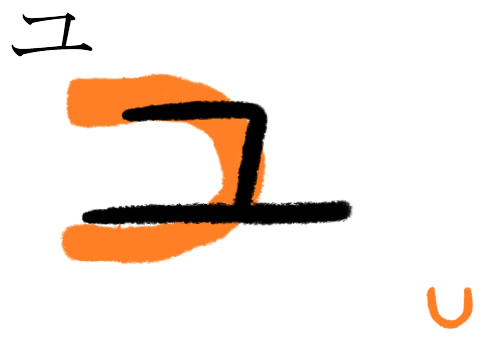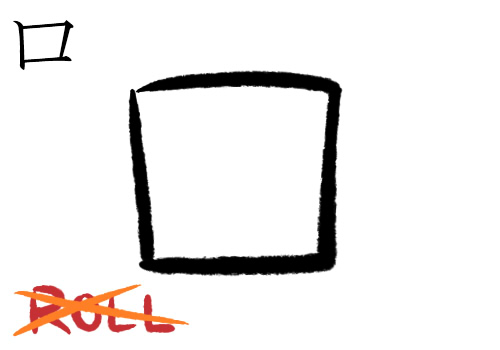Memorizing the Katakana/Print version
| This is the print version of Memorizing the Katakana You won't see this message or any elements not part of the book's content when you print or preview this page. |
The current, editable version of this book is available in Wikibooks, the open-content textbooks collection, at
https://en.wikibooks.org/wiki/Memorizing_the_Katakana
The Vowels
The K line
The S line
The T line
The N line
The H line
The M line
The Y line
The R line
The W line
Tough

Several katakana look similar and may cause confusion. These are:
シ and ン
[edit | edit source]シ and ン can be thought of as smiley faces looking towards the right. The character with both eyes is a shi (she), while the character with one eye has a nice eyepatch. The short strokes on the top slant towards the right, while the same strokes for ツ and ソ slant downwards.
ツ and ソ
[edit | edit source]ツ and ソ can be thought of as rating systems for waves at a beach. The short lines represent the rating (or people on the beach) and the long line is the coast. A rating of 2 short stokes means tsunami, and two people are running away. A rating of 1 short stroke means soft or so-so waves, with a single person relaxing on the beach.
ウ and ワ
[edit | edit source]ウ, the umbrella, has a ferrule on its top while ワ, the flipped over wagon, does not.
ヲ and ヨ
[edit | edit source]ヲ, the (World Wor Won), is rounded like a hand-written 3. ヨ, the gangster YO! is angular and has a small line extending on the bottom.
ケ and ク
[edit | edit source]In ケ, the cane (ke), the second stroke (representing the arm) extends over the cane. In ク, the cup (ku) handle is smooth.
Dakuten
Dakuten ( ゙ ) and Handakuten ( ゚ ) are marks placed after certain katakana that modify the way the consonant is pronounced. These marks indicate that the consonant of the syllable should be voiced.
| normal | with dakuten ( ゙ ) | with handakuten ( ゚ ) |
|---|---|---|
| カ = ka | ガ = ga | |
| サ = sa | ザ = za | |
| タ = ta | ダ = da | |
| ハ = ha | バ = ba | パ = pa |
Exceptions
[edit | edit source]"Shi" (シ) turns into "Ji" (ジ)
"Chi" (チ) also turns into "Ji" (ヂ)
"Tsu" (ツ) turns into "Zu" (ヅ)
"U" (ウ) turns into "Vu" (ヴ)
Sokuon
[edit | edit source]Sokuon (ッ) is a symbol consisting of a small Tsu (compare with normal Tsu: ツッ). It is used to insert a slight pause.
Chōonpu
[edit | edit source]Chōonpu (ー) is a symbol used to indicate a long vowel sound. Long vowels can also be written by using the corresponding vowel katakana.
| normal | with chōonpu ( ー ) | is the same as |
|---|---|---|
| プ = pu | プー = puu | プウ = puu |
Easy quiz
Note
- All questions are to be answered using the English equivalent of the katakana (e.g. ha, ru, shi etc.)
- Please answer using only lowercase letters
Hard quiz
Note
- All questions are to be answered using the English equivalent of the katakana (e.g. shi, zu, ji etc.)
- Please answer using only lowercase letters









